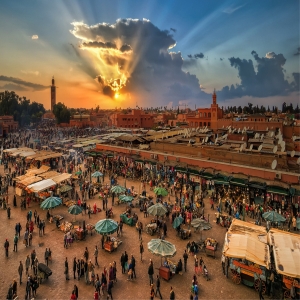- Home
- About Us
- Tel : +91 33 4022 9591
MarrakechView all the popular packagesOffers
2 Popular Packege(s)
There, musicians, dancers and fire-eaters rub shoulders with public scribes, storytellers and acrobats. In the evening, the lamps are lit and the hot food stalls are set up. Before long, the balm of nightfall is accompanied by the delicious smells of roasting meat, couscous, harira and freshly baked doughnuts.
Suddenly, as you turn the corner of a narrow street, through a half open door, you catch a glimpse of a palace with a fountain cascading in the forecourt. The Bahia Palace, with itâs gardens filled with the fragrance of jasmin and orange flower, or the Dar Si-Said, which now houses the Museum of Moroccan Arts.
Everything in Marrakech is worth seeing: the impersonal beauty of the Saadian Tombs, the Ben Youssef Medersa and the majestic ruins of the Badii Palace.
Then there are the souks. To wander through a souk is to be drawn into Aladdinâs cave of fine rugs, silverware, jewellery, basketry, pottery, wood carving and exceptional leatherware, for which Morocco is renowned. There are quite a lot of amazing things to do in Marrakech; drift towards the Atlas Mountains in a hot air balloon, go camel riding in the palmgroves or spend a day skiing if you are visiting Morocco in the winter.
Area 31160 Square Kilometers
Population 0.93 Million
Winter Temperature 29 C
Summer Temperature 13 C
Best Time To Visit The spring and fall shoulder seasons boast the most desirable weather and the smallest crowds. Despite brutally hot temperatures, summer is the most popular time to visit Marrakech.
Air
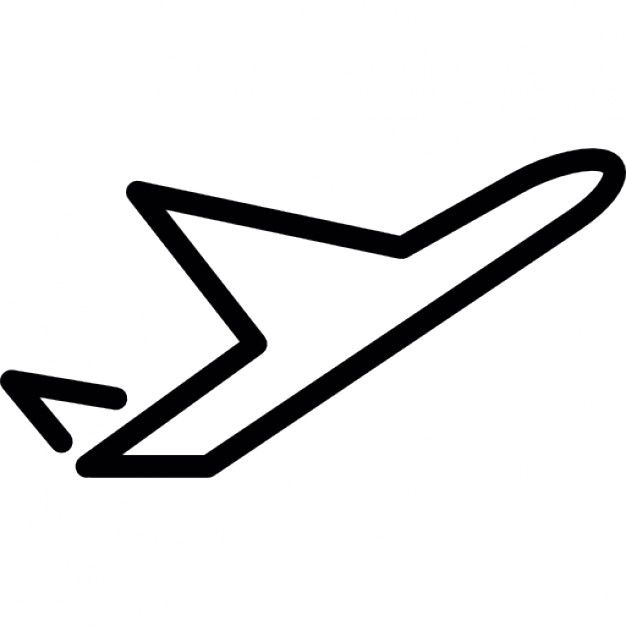
Marrakech Menara Airport is the main air terminal. This place can be reached via direct or connecting flights.
Road

There are daily buses leave from Agadir, Fes, Casablanca and Quarzazate. The city is connected via these places.
Djemaa el Fna
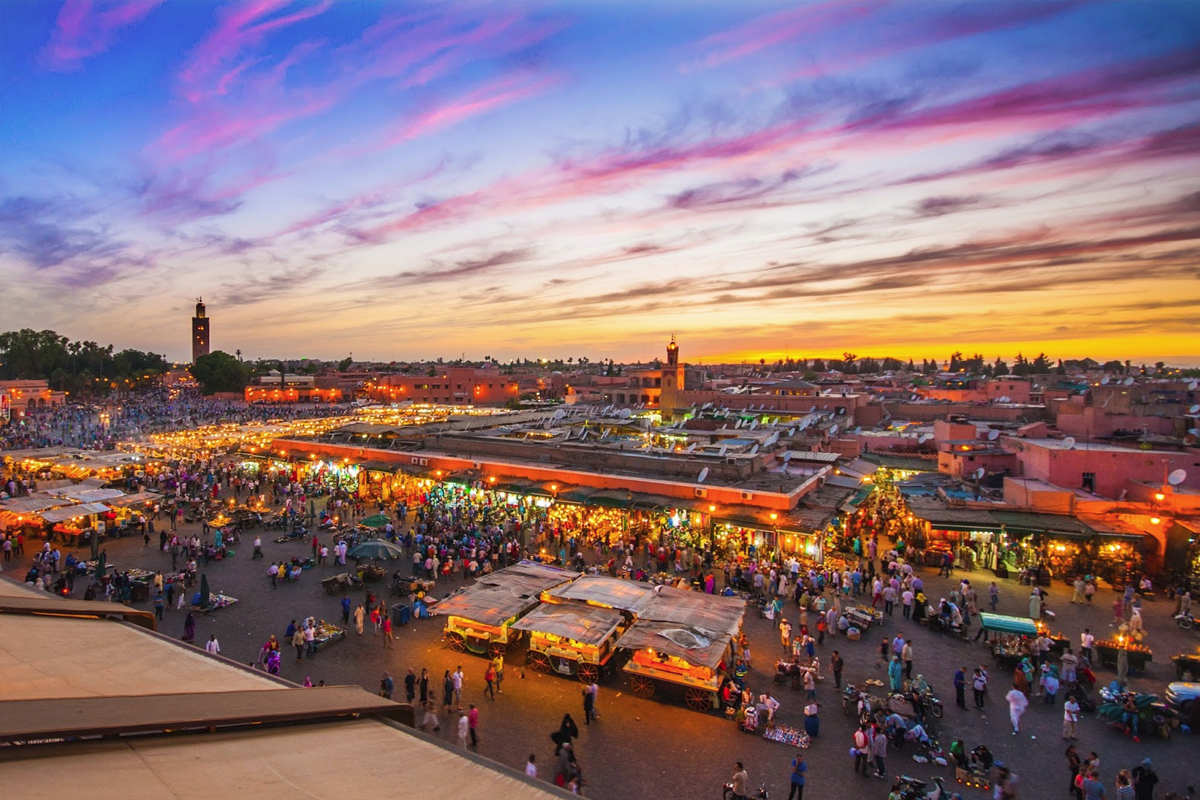
There are few places on earth as exotic, or as strange, as Djemaa el Fna (Place of the Dead), the busiest square on the entire African continent, and much of the reason why travellers have been lured to Morocco for centuries. At any time of day there is something beguiling occurring on this public square, where wealthy sultans once beheaded enemies and criminals. Snake charmers, musicians, palm readers, gypsies, bedouins, dentists, men selling dried animal parts for potions, and an endless array of colours mix in a swirling rhythm of energy
Koutobia Mosque
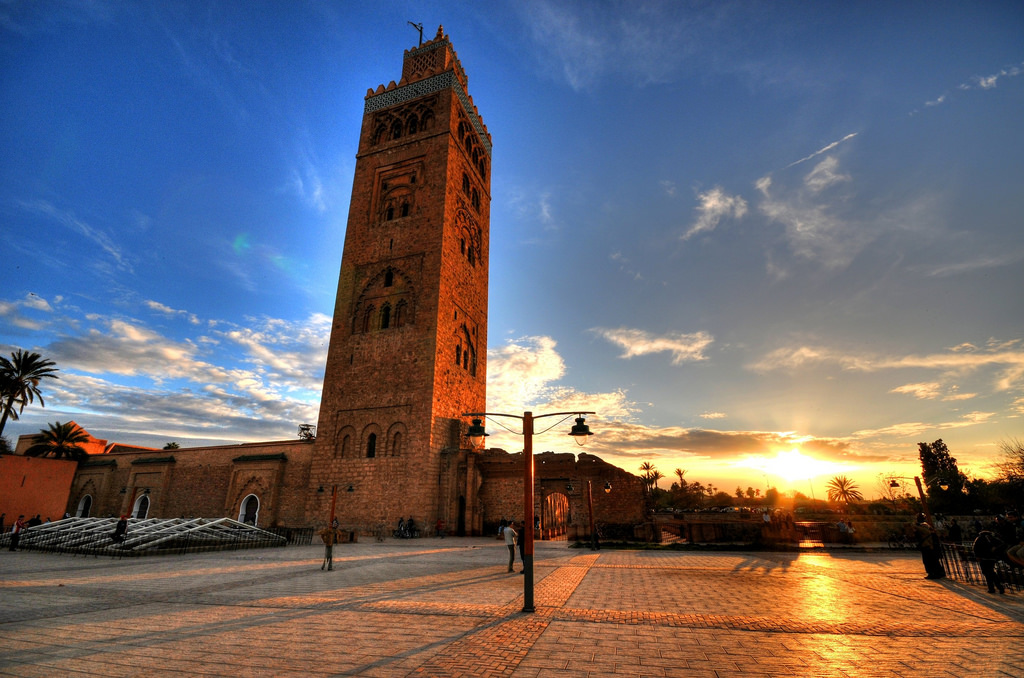
Named after a bazaar of booksellers that once stood nearby, the Koutobia Mosque is one of the most stunning pieces of architecture you will find in Morocco. The mosque was constructed in the early 12th century by Almohad Sultan Abdel Moumen, and is topped by three golden orbs, offered, according to legend, by the sultan's mother as penance for missed fasting days during Ramadan. The red brick minaret stands approximately 70m high, and can clearly be seen from all points of the city. If you think the mosque looks vaguely familiar, it may be because it was used as a model for the Hassan Tower in Rabat and the Giralda in Seville.
South of Avenue Mohammed V. Closed to non-Muslims, however, the gardens outside are open to all.
Jardin Majorelle
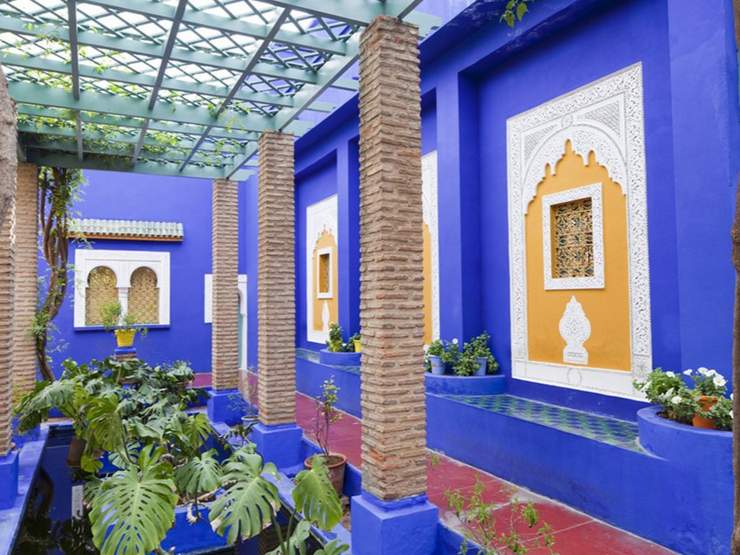
Majorelle botanical garden, owned by French fashion designer Yves Saint-Laurent since 1980, is quite stunning and offers a wonderful break from the otherwise dry, dusty cityscape - it is an oasis in the city if ever there was one. The blue hues, lush green plants from five continents, and small lily strewn ponds show a side of Morocco that you shouldn't miss. Designed by the expatriate French artist Jacques Majorelle in 1924, the shade of bold cobalt blue which he used extensively in the garden, and on the studio walls is named after him, Majorelle bleu.
The garden also houses the Islamic Art Museum of Marrakech, whose collection includes North African textiles from Saint-Laurent's personal collection as well as ceramics, jewellery, and paintings by Majorelle. Ave Yacoub el Mansour.
Bahia Palace

The Bahia (meaning "brilliance") Palace was built in the late 19th century by Si Moussa, Grand Vizier of the Sultan, also known as Abu Ahmed, a black slave who rose to power and enormous wealth. With plans to create the most magnificent palace of its time, Ahmed commissioned craftsmen from Fez to design the ornate building for him and his favourites concubines. Blending Moroccan and Islamic styles, the buildings are highly decorative and elaborate - arguably too much so for most modern tastes. A central, two-acre garden is surrounded by rooms intended for his concubines and is one of the highlights of a tour.
Palais Dar Si Said
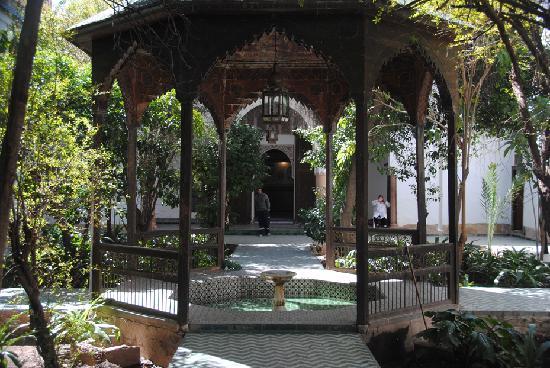
Built by Sidi Saïd, brother of Vizier Bou Ahmed, this 19th century palace is now the best museum in Marrakech. (Museum of Moroccan Arts). The highly valued collection of Moroccan antique crafts includes jewellery, carpets, leatherwork and pottery from the seaside town of Safi and from Tamegroute, near Zagora. On the ground floor you can find clothes, objects in beaten copper, arms and Berber jewellery. The first floor is detailed in Spanish Moorish decoration and you can also find elegant cedar furniture.
Carré Eden Shopping Center

Shopping Mall
Address: Avenue Mohammed V, Marrakech, Morocco
Al Mazar
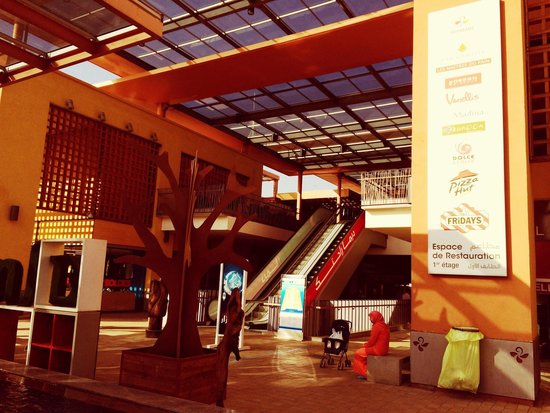
Shopping Mall
Address: Route de l'ourika, Marrakech 40000, Morocco
I limoni
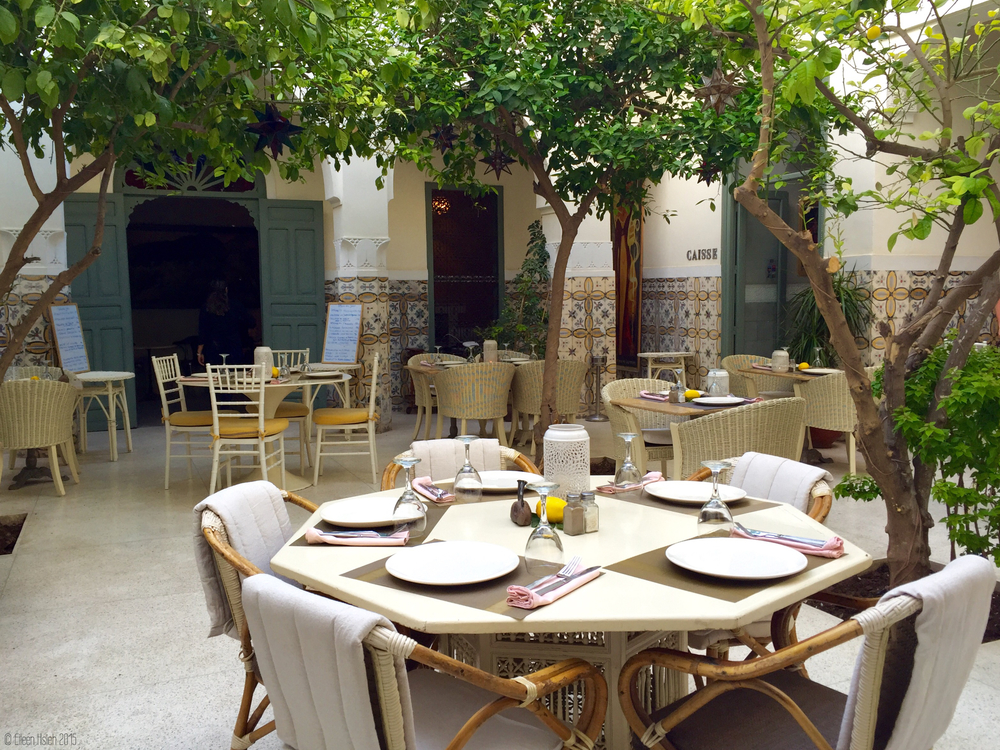
Restaurant · Medina
Address: Marrakesh, Morocco
Roti D'or
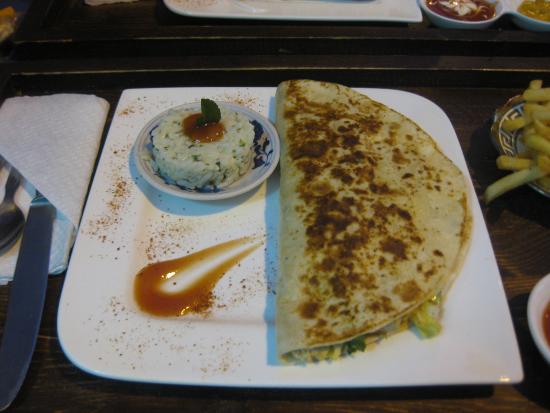
Multicuisine
Address: Rue Kennaria, Marrakesh, Morocco

